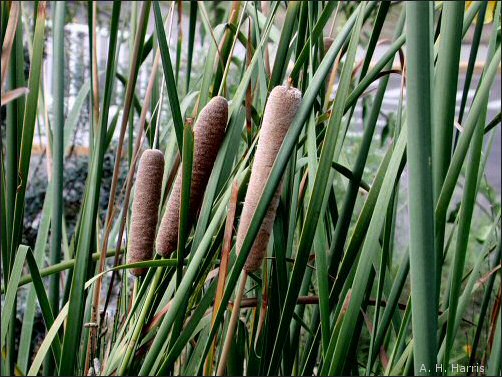
How do cattails manage in the desert? The plant requires an aquatic habitat, but once away from the river valleys, permanent water holes are few and far between. If you're at all familiar with cattails, you know it by the brown, cigar-shaped structure on top of a tall stalk. In early summer, that structure is made of thousands of flowers. Each flower is either male or female, and the sexes are segregated. The top part of the spike is reserved for male flowers, with the female flowers below. This makes sense, because the males are soon dispensable, while the female flowers must remain until the seeds mature. And that's the secret to the cattail's success in colonization, because the tiny seeds, well endowed with fluff to catch the wind, can be carried enormous distances. If not this year, then next.
Little seems to be much written about early use of cattails in the
Chihuahuan Desert, but it's a good guess that they were utilized for pollen flour,
crunchy shoots, and starch—a supermarket with its feet in water.
![]()
Contributor: Arthur H. Harris, Laboratory for Environmental Biology, Centennial Museum, University of Texas at El Paso.
Desert Diary is a joint production of the Centennial Museum and KTEP National Public Radio at the University of Texas at El Paso.

Foliage and the "cattails" with the female flowers about to shed their seeds, Chihuahuan Desert Gardens. Photograph by A.H. Harris, 12 Oct 2003.